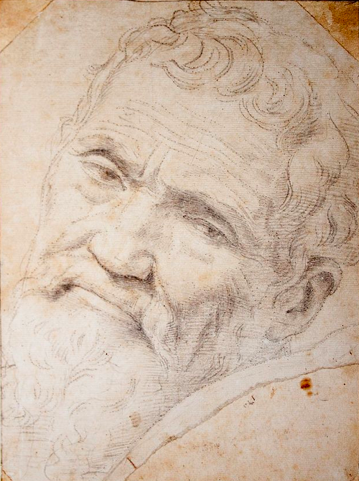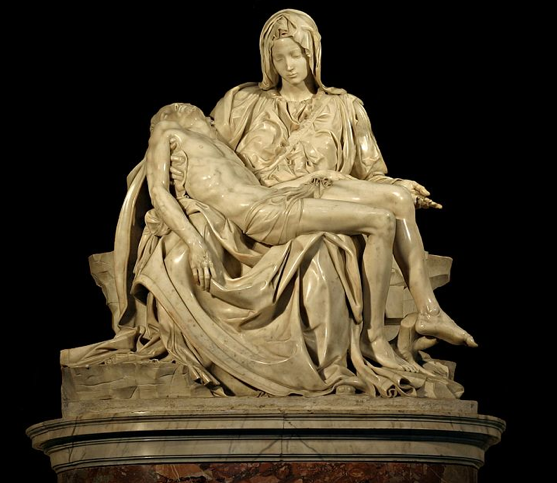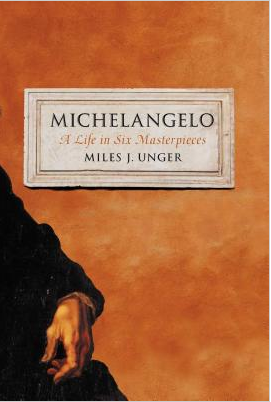 By Miles Unger (Guest Contributor)
By Miles Unger (Guest Contributor)
An Unexpected Claim
It might sound strange to call Michelangelo (1475-1564) the first modern artist. He was, after all, the prototype of the “Renaissance Man”, heir to such giants as Giotto, Brunelleschi, Masaccio, Donatello, and Leonardo da Vinci. A consummate craftsman who worked in the great tradition of figurative painting and sculpture fostered in his native Florence, he might appear to have little in common with contemporary purveyors of inscrutable, often incomprehensible, oddities that leave us scratching our heads and wondering whether our infant children might not be capable of something similar.
But dig a little deeper, beneath the dazzling skill and unmatched ability to render the human form, and you will discover in Michelangelo’s work something new: a distinctive temperament, the personality of the artist bursting through, demanding to be heard, imposing his idiosyncratic vision on the material.
Combining Renaissance Ideal with Modern Self
In some ways this was the fulfillment of the Renaissance ideal. This was, after all, the Age of Man, when the human animal (at least the male half) came into his own, proud of his achievements and proclaiming his individual worth. Michelangelo’s friend, the philosopher Pico della Mirandola, stated it most memorably in his “Oration on the Dignity of Man”: “O highest and most wonderful felicity of man! To him it was granted to have what he chooses, to be what he wills.”
We can see this buoyant spirit in Michelangelo’s early Pietà (1498), a tour-de-force of marble carving boldly signed by the artist on a strap  that lies across the Virgin’s breasts. The boastfulness is even more apparent in the enormous David, perhaps the greatest emblem of Man in the fullness of his powers. But in the later works, a new element creeps in: Michelangelo’s famed terribilità (awesome terror). In the prophets of the Sistine Ceiling, in the Moses—and even more in the Captives intended for the same monument— in the knotted figures of the Medici Tombs who seem to be at war with themselves, and the tormented souls who tumble to their doom in the Last Judgment, art becomes a vehicle for self-expression. Whatever the ostensible subject, we feel the artist’s personality emerging, his fierce pride and equally fierce self-doubt, an ego titanic enough to take on God’s Creation, but also an awareness of his own sinful nature that made him despair of his own salvation.
that lies across the Virgin’s breasts. The boastfulness is even more apparent in the enormous David, perhaps the greatest emblem of Man in the fullness of his powers. But in the later works, a new element creeps in: Michelangelo’s famed terribilità (awesome terror). In the prophets of the Sistine Ceiling, in the Moses—and even more in the Captives intended for the same monument— in the knotted figures of the Medici Tombs who seem to be at war with themselves, and the tormented souls who tumble to their doom in the Last Judgment, art becomes a vehicle for self-expression. Whatever the ostensible subject, we feel the artist’s personality emerging, his fierce pride and equally fierce self-doubt, an ego titanic enough to take on God’s Creation, but also an awareness of his own sinful nature that made him despair of his own salvation.
Also distinctly modern was the way Michelangelo cultivated his image. Called “divine” even in his own lifetime, he understood the value of good press, shaping his biography (and manipulating his biographers) to foster the image of the solitary genius who owed nothing to his colleagues. If in his dedication to his craft he looked back to earlier centuries, in his understanding of PR he paved the way for countless self-promoters in ages yet to come.
 Miles Unger writes on culture and the arts for The Economist and is a former contributing writer to the New York Times. He is the author of three biographies of Renaissance figures: Magnifico: The Brilliant Life and Violent Times of Lorenzo de’ Medici (2008); Machiavelli: A Biography (2011); and, most recently, Michelangelo: A Life in Six Masterpieces (2014).
Miles Unger writes on culture and the arts for The Economist and is a former contributing writer to the New York Times. He is the author of three biographies of Renaissance figures: Magnifico: The Brilliant Life and Violent Times of Lorenzo de’ Medici (2008); Machiavelli: A Biography (2011); and, most recently, Michelangelo: A Life in Six Masterpieces (2014).
